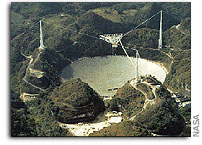Blinding Asteroid Scientists From Seeing Threats To Earth

 Reader note: “Discussion at the Planetary Defense Conference in Washington today revealed that there are a variety of ways for NASA to meet the Congressional mandate to find 90% of the Near Earth Asteroids larger than 140 meters diameter by 2020. Not surprisingly, these options come with different costs attached.
Reader note: “Discussion at the Planetary Defense Conference in Washington today revealed that there are a variety of ways for NASA to meet the Congressional mandate to find 90% of the Near Earth Asteroids larger than 140 meters diameter by 2020. Not surprisingly, these options come with different costs attached.
If we accept an 85% discovery goal by 2020, or if the goal is framed in terms of retiring 90% of the impact risk rather than finding 90% of the asteroids, it can likely be meet with a combination of two new-technology groundbased survey telescopes already planned. The Pan-STARRS survey telescope in Hawaii is being financed primarily by the U.S. Air Force, and the LSST in Chile by the NSF. NASA’s direct costs to extract the asteroids from the data streams from these two telescopes might be as low as $10-$20 million per year.”
“An asteroid discovery program based on using these telescopes might even have some funds left over to help researchers study the nature of these objects and plan how to deflect them if one is discovered to be on a collision course with Earth.
One special issue that came up repeatedly at the meeting on Monday was the plan to close down the giant radar telescope at Arecibo in Puerto Rico. This unique facility has taught scientists much of what we now know about these strange small asteroids that come close to the Earth, but the NSF has indicated that it plans to close down the Arecibo radar program next year, in effect blinding scientists who wish to characterize these potential threats.”
 Another Reader notes: “NASA says it lacks the funds to identify all the asteroid threats—but these threaten the world, not just the USA. China, France, etc. should all be involved in this. A number of nations chipped in funding for the prototype fusion reactor and their scientists will be involved and share in the results from that project. I think NASA should spearhead a meeting with interested nations about the asteroid threat and try to build a funding coalition to get the job done, rather than whining because a Bush budget staffer won’t give them enough to do it. One asteroid several kilometers in diameter wiped out the dinosaurs, but they didn’t have the brains to prevent it. I’m not sure we do, either.”
Another Reader notes: “NASA says it lacks the funds to identify all the asteroid threats—but these threaten the world, not just the USA. China, France, etc. should all be involved in this. A number of nations chipped in funding for the prototype fusion reactor and their scientists will be involved and share in the results from that project. I think NASA should spearhead a meeting with interested nations about the asteroid threat and try to build a funding coalition to get the job done, rather than whining because a Bush budget staffer won’t give them enough to do it. One asteroid several kilometers in diameter wiped out the dinosaurs, but they didn’t have the brains to prevent it. I’m not sure we do, either.”








